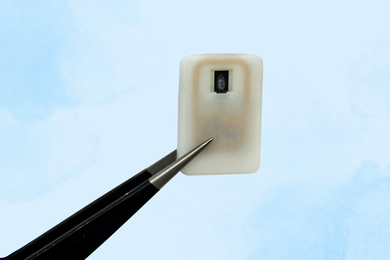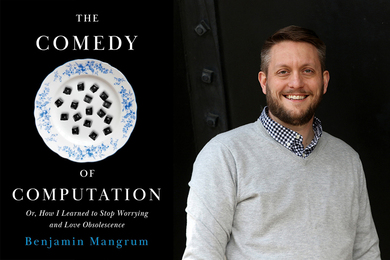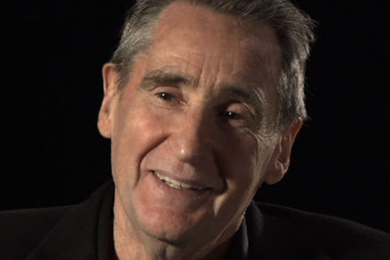Frank Press, a noted geophysicist and science adviser to four U.S. presidents, died Jan. 29 in Chapel Hill, North Carolina. He was 95.
Press, an MIT Corporation life member emeritus, was the chair of the MIT Department of Geology and Geophysics (renamed in 1969 as the Department of Earth and Planetary Sciences, and currently the Department of Earth, Atmospheric, and Planetary Sciences, or EAPS) from 1965 to 1977 and later returned to MIT for a short period as an Institute Professor. He is credited with major advances in geophysical research into the structure of the Earth’s interior, lunar and planetary science, earthquake seismology, and seismic wave propagation.
“Frank Press was a giant,” says EAPS department head Robert van der Hilst, “and of monumental importance for earth sciences at MIT.”
“Frank was an inspiration to a whole generation of geophysicists and will be remembered for his science, humanity, and mentorship,” says Professor Emeritus M. Nafi Toksöz, who was once one of Press’ graduate students.
The son of Jewish immigrants from what is now Belarus, Press came to science partly through a childhood love of experimenting, using parts he and his friends scavenged in junkyards near their Brooklyn neighborhood. As a child, he also read voraciously, including The New York Times, which his older brothers brought home each day.
According to a 1997 interview with the American Institute of Physics (AIP), Press’ early performance in school was not auspicious, however. Luckily for the world of science, that changed when he was about 11.
“I wasn’t very smart in school until the sixth grade,” Press told the AIP.
“What happened?” the interviewer asked.
“I got a pair of glasses. I couldn’t see the blackboard,” Press answered with a laugh.
In high school in New York City, Press took a geology class in which the teacher gave him a magnetometer and told him to do a magnetic survey of Van Cortland Park in the Bronx. It was on that day that Press decided on his career path.
“That really got me,” Press told the AIP. “Because here’s a way I could do physics … and be an explorer.
Press went on to earn his bachelor’s degree in physics at City College of New York and a PhD in geophysics from Columbia University. At Columbia, he studied with renowned earth scientist Maurice Ewing, and together they developed the Press-Ewing seismograph.
In 1955, Press became director of the Seismological Labory at Caltech, where he succeeded lab founder Beno Gutenberg and worked with seismologists Hugo Benioff and Charles Richter. It was during his time at Caltech that Press began consulting for the federal government, mainly using seismic equipment for the detection of nuclear explosions. Press served on presidential advisory boards starting during the Kennedy Administration and, in 1963, he proposed improving the worldwide seismic station network to bolster that year’s Nuclear Test-Ban Treaty.
In 1965, Press came to MIT as head of the Department of Geology and Geophysics, partly to go beyond seismology and build a broad geophysics department, including by collaborating with the Woods Hole Oceanographic Institute and helping to form the MIT-WHOI joint program.
“I felt I could do better at MIT, as a new person, making it a condition of taking the job that we do certain things,” Press said in a 1993 interview he provided for the Caltech archives. “I needed a new challenge — I could get it at MIT.”
MIT Professor Emeritus B. Clark Burchfiel calls Press “one of the most influential members of our faculty,” who put the EAPS department on its current path. “He was a good friend, and we will miss him,” Burchfiel says.
Having continued to serve on science advisory boards during the Johnson and Nixon administrations, Press received a call in 1977 from President Jimmy Carter, who asked him to become the White House science adviser. Press accepted, also becoming director of the newly established Office of Science and Technology Policy.
In that role, Press worked to ensure that the United States remained the leader in scientific research, at the same time fostering international alliances and scientific cooperation.
“Cooperation among scientific communities in all countries will become even more important in the years ahead as the problems we face increasingly will transcend national boundaries,” The New York Times quoted Press as saying in 1978.
As Press’ son, William Press, told The New York Times, one of his father’s proudest achievements as Carter’s science adviser was paving the way for students to come to U.S. universities from Communist China. The expansion of this initiative was the immediate result of a 3 a.m. phone call by Press to the White House from Beijing, where Press had traveled to meet with Chinese leader Deng Xiaoping.
After Carter’s term as president, Press returned briefly to MIT before returning to Washington to become president of the National Academy of Sciences, where he served for 12 years, advocating vigorously for international exchanges of research and scientists, as well as overseeing a 1986 report warning of potential danger of HIV/AIDS, and promoting science education.
Among many awards and some 30 honorary degrees, Press received a gold medal from the Royal Astronomical Society, NASA’s Distinguished Public Service Medal, the Japan Prize, the Vannevar Bush Award, and a National Medal of Science for his “contributions to the understanding of the deepest interior of the Earth and the mitigation of natural disasters, and his service in academia, as a government official, and at the National Academy of Sciences.”
In 2000, he was designated president emeritus of the National Academy of Sciences, the first time that honor was bestowed.
Press’ wife, the former Billie Kallick, who was prominent in the field of early childhood education, died in 2009. Press leaves two children, William H. Press of Austin, Texas, and Paula E. Press of Chapel Hill; two grandchildren; and two great-grandchildren.






